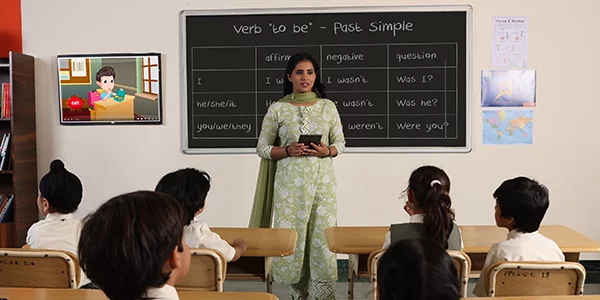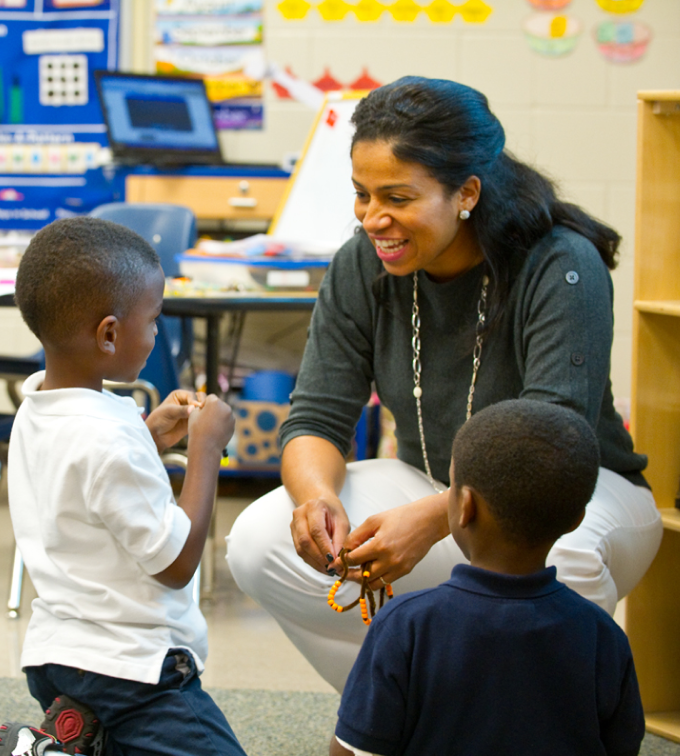Exploring the Various Training Methods in Primary Scientific Research Education And Learning Today
The landscape of key science education is developing, with numerous training methods obtaining importance in modern class. Inquiry-based understanding, hands-on experiments, and the integration of modern technology are redefining exactly how instructors engage young minds. In addition, collective strategies and set apart instruction are being used to cater to the diverse needs of trainees, improving both engagement and understanding. As we analyze these methods, inquiries arise concerning their effectiveness and the ramifications for future academic methods. What might these changes in approach mean for the following generation of students?
Inquiry-Based Knowing
Inquiry-Based Learning (IBL) is a pedagogical method that encourages pupils to check out clinical concepts via wondering about, investigation, and hands-on trial and error. This method highlights the role of students as energetic individuals in their understanding, promoting important thinking and analytic skills. By involving with real-world questions, students come to be motivated and interested, which improves their understanding of clinical principles.
In IBL, teachers work as facilitators, guiding trainees as they browse their inquiries instead than providing information straight. This student-centered method permits for distinction, accommodating numerous discovering paces and styles. Pupils establish abilities in formulating hypotheses, creating experiments, and assessing data, which are vital for scientific literacy.
Furthermore, IBL fosters partnership among trainees, motivating them to share findings and concepts. This cumulative query advertises social skills and a feeling of community within the class. In addition, the procedure of questions encourages strength, as students learn to embrace failing as a stepping rock towards understanding.
Hands-On Experiments
Hands-on experiments are an important element of reliable scientific research education and learning, matching the principles of inquiry-based understanding. These experiments enable students to involve directly with clinical ideas, promoting a deeper understanding through experiential learning. By controling products and observing results, young learners can comprehend abstract concepts in concrete means.
Such tasks promote crucial reasoning and analytic abilities, as trainees hypothesize results, conduct experiments, and assess results. This process urges them to ask concerns, improve their understanding, and develop a scientific state of mind. Hands-on experiments can be tailored to varied discovering styles, ensuring that all trainees have the chance to engage meaningfully with the content.
Additionally, hands-on experiments usually encourage collaboration amongst peers, promoting team effort and communication skills. Working in teams allows students to share ideas, review searchings for, and find out from one an additional, which enhances their overall academic experience.
Integrating hands-on experiments right into the key science educational program not just improves the discovering setting however additionally cultivates a long-lasting rate of interest in scientific research. By proactively getting involved in their education and learning, trainees are more probable to establish a passion for clinical query that expands beyond the class.

Innovation Assimilation
Incorporating technology right into key science education and learning has actually become increasingly crucial in cultivating trainee engagement and boosting learning outcomes. Using electronic tools, such as interactive simulations, virtual labs, and academic software application, gives pupils with opportunities to explore scientific principles in cutting-edge methods. These resources facilitate a deeper understanding of intricate topics by allowing students to visualize and control variables that would be unwise in a standard classroom setup.
In addition, innovation assimilation urges This Site individualized discovering experiences. Trainees can advance at their very own pace, reviewing tough concepts through multimedia sources, which accommodate various learning styles. This versatility not just sustains private development however also cultivates a feeling of autonomy in learners.
Furthermore, modern technology acts as a bridge to real-world scientific research, linking students with existing research and specialist contributions. Access to on-line databases and clinical journals widens pupils' perspectives on scientific query and fosters essential thinking abilities.
Collaborative Understanding
Joint knowing plays a vital function in key science education and learning by fostering teamwork and interaction abilities amongst trainees. This technique motivates learners to work with each other, share expertise, and participate in analytic, which boosts their understanding of clinical principles. By joining team tasks, trainees discover to articulate their ideas, listen to varied point of views, and bargain options, all of which are necessary skills in both academic and real-world contexts.

Research study suggests that joint learning can cause enhanced inspiration and engagement in science subjects, as trainees find pleasure in shared experiences (primary science tuition Singapore). Furthermore, this method prepares trainees for future joint ventures, outfitting them with the skills essential for efficient teamwork in college and professional atmospheres. Inevitably, welcoming collective learning in primary scientific research education can substantially enrich the knowing experience and advertise a much deeper understanding of clinical query
Differentiated Instruction

Separated guideline can materialize in different methods, such as differing the web content, procedures, or items of discovering. For circumstances, instructors may use tiered assignments that provide differing degrees of complexity, enabling students to work at their respective preparedness degrees. Furthermore, versatile grouping approaches can assist in cooperation amongst pupils with different abilities, cultivating peer discovering.
Evaluation plays navigate to this site a vital role in this approach, as it notifies instruction and aids instructors recognize each student's one-of-a-kind requirements. Formative evaluations, such as observations and quizzes, can lead instructors in readjusting their approaches to boost finding out results. primary science tuition Singapore. Inevitably, read the article by carrying out set apart instruction in main science education and learning, instructors can cultivate an extra equitable and efficient learning atmosphere, encouraging all students to reach their full possibility in understanding scientific phenomena
Final Thought
In recap, the diverse mentor approaches in main scientific research education, including inquiry-based discovering, hands-on experiments, modern technology integration, collective understanding, and differentiated direction, jointly add to an extra reliable learning atmosphere. These techniques advertise important reasoning, analytic abilities, and a much deeper comprehension of scientific principles. By applying these strategies, educators can develop interesting and encouraging class that attend to the diverse demands of pupils, inevitably cultivating a long-lasting passion in science and enhancing academic achievement.
Inquiry-Based Knowing (IBL) is a pedagogical method that urges students to discover clinical ideas with doubting, examination, and hands-on trial and error.Joint understanding plays a crucial function in main science education and learning by cultivating team effort and interaction abilities among students.Study suggests that collaborative knowing can lead to enhanced inspiration and interaction in science topics, as students find pleasure in shared experiences.In promoting an inclusive understanding atmosphere, set apart direction arises as a crucial strategy to suit the varied needs and capacities of trainees in key science education and learning. Ultimately, by applying distinguished guideline in primary scientific research education and learning, teachers can grow a more fair and effective knowing environment, equipping all students to reach their complete possibility in recognizing scientific phenomena.